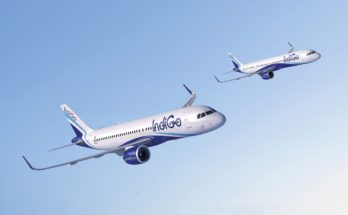
Korea Aerospace Industries has bounced back following an earlier scandal in 2017 that rocked the company and led to the ouster of many top-level corporate officials amid allegations of corruption and profiteering. A new CEO, Kim Jo-won, was appointed to right the company and boost transparency throughout the firm.
For 2018, Korea Aerospace Industries posted sales of KRW2,786 billion, up 34 percent from sales of KRW2,072 billion in 2017. The company posted net income of KRW55 billion, compared to a loss of KRW235 billion for 2017. The loss in 2017 was due to adjustments for past accounting irregularities.
For the most part, Kim has been focusing his energies on the accounting side of operations while maintaining KAI’s growth as an aerospace manufacturer. His appointment has been well received, and under his watch the company should become more effective and efficient.
The turmoil has been a speed bump in KAI’s effort to become a globally recognized aerospace manufacturer. With the help of international partners such as Airbus Helicopters and Lockheed Martin, the company developed and produced helicopters and aircraft for the South Korean military. In addition, the firm has grown its subcomponent work for airframers such as Airbus and Boeing. More recently, the company has achieved some success on the export market, furthering its international cachet.
The company is boosting international sales of its T-50 aircraft, and has scored orders from Indonesia, Iraq, and the Philippines. With three successes, opportunities for the T-50 may open up in the United Arab Emirates, Thailand, and Peru. However, the program was dealt a blow when it lost out on the USAF T-X competition to a Boeing/Saab team.
The loss was a demoralizing one, as the KAI/Lockheed team believed it had a very competitive and proven trainer aircraft. For KAI, hopes that a win would bolster its reputation as a world-class defense exporter have been dashed – for the near term at least. As it regroups, the company will focus its export efforts on the aircraft’s attack variant, the F/A-50, for Asian and Middle Eastern prospects.
On the home front, KAI has been quite successful, landing several major programs – the LAH/LCH helicopter programs and the KF-X. As has been the case with many of KAI’s efforts, these programs will be developed with primarily foreign companies – in this case, Airbus Helicopters and Lockheed Martin, respectively. This strategy has resulted in more funds being available for development and has overcome capability shortcomings while at the same time furthering indigenous growth through technology transfers.
The company has also expanded its offerings with a new MRO subsidiary, Korea Aviation Engineering & Maintenance Service (KAEMS). KAI, which owns a controlling stake in the operation, is looking to offer the services to commercial and military customers in both South Korea and the region – including U.S. military aircraft in the sector. It is a solid move, as MRO services can be very profitable. It does, however, put the firm in even more direct competition with its local rival, Korean Air’s Aerospace Division (KAL-ASD).
KAI remains ambitious in its desire to become a global aerospace company. Its dogged tenacity to reach this goal, despite the recent setbacks, may one day allow the company to fully realize its ambition – it might just take a bit longer than originally planned.
A military history enthusiast, Richard began at Forecast International as editor of the World Weapons Weekly newsletter. As the Internet grew in importance as a research tool, he helped design the company's Forecast Intelligence Center and currently coordinates the EMarket Alert newsletters for clients. Richard also manages social media efforts, including two new blogs: Defense & Security Monitor, covering defense systems and international issues, and Flight Plan, which focuses on commercial aviation and space systems. For over 30 years, Richard has authored the Defense & Aerospace Companies, Volume I (North America) and Volume II (International) services. The two books provide detailed data on major aerospace and defense contractors. He also edits the International Contractors service, a database that tracks all the contractors involved in the programs covered in the FI library. More recently he was appointed Manager, Information Services Group (ISG), a new unit that encompasses developing outbound content for both Forecast International and Military Periscope.



